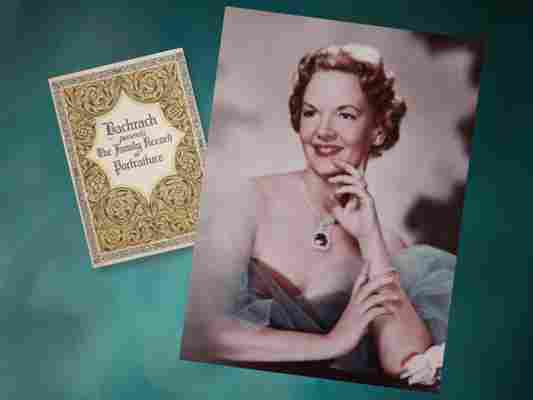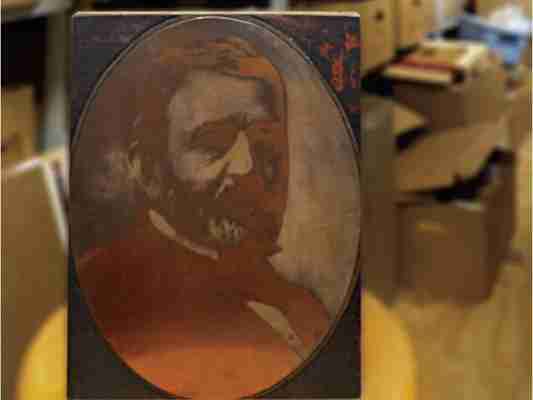
The aspiring photographer David Bachrach was still just a teenager in Baltimore when he landed an apprenticeship at Harper’s Weekly . His big break came in November of 1863 when the magazine sent him on assignment to Pennsylvania, where he took one of only three confirmed photographs of Abraham Lincoln at Gettysburg. Because Lincoln spoke for only two minutes or so, Bachrach was unable to prepare his camera fast enough to capture the president delivering his speech. Instead, Bachrach’s photograph shows Lincoln after the address, sitting in a chair on the speaker’s platform in front of a teeming crowd.
A year later, the Army dispatched Bachrach to photograph Union prisoners in South Carolina. Some of those photos served as evidence at a court martial for the prison camp commander, who was executed on charges of murder and instituting cruel and inhumane punishment. For a while after the Civil War, Bachrach worked for other photographers, and in 1868, with around $200 that he’d saved, he launched his own studio in Baltimore, which would go on to become the most prestigious and influential portrait photography studio in the country.

From the start, Bachrach’s glass-plate portraits depended on natural light, which he creatively exploited to bring out the best in his subjects. With his knack for coaxing people to relax in front of the camera, Bachrach built up an enviable client base. He lived through the rapid-fire evolution of photography and contributed to it as well: He patented several photographic and printing processes, including a widely used method of making photo-relief plates for printing illustrations, and published articles in photography journals. Bachrach contacted Lincoln’s successor, President Andrew Johnson, and photographed him.
The firm, Bachrach Photographers , has been in the family for 153 years and is recognized as one of the oldest continuously operated portrait studios in the world. A Bachrach has photographed every president from Lincoln to George H.W. Bush and immortalized hundreds of other American luminaries, including Thomas Edison, Amelia Earhart and Hank Aaron—reportedly two days after he broke Babe Ruth’s record for career home runs. More recently, Ruth Bader Ginsburg and John McCain received the Bachrach treatment. Celebrity photographs are the most visible Bachrach product, but brides, executives and everyday people make up the bulk of the business.
The studio has long combined distinctive portraiture and marketing savvy. During World War I, Bachrach Studios reached out to women whose loved ones were in the service. “Your photograph will cheer him over there,” newspaper advertisements said. In the 1920s, David’s son Louis Fabian, known as LFB, expanded the family enterprise to 48 studios in 12 states with up to 600 employees. His credo, “In order to become famous you have to photograph the famous,” paid off: Before the Great Depression, the studio was bringing in more than $1.5 million a year, roughly $22 million in today’s money.
In the 1950s, the studio started to adopt color photography, which has been the standard since the 1970s. A likeness of President John F. Kennedy, made by LFB’s son Louis Fabian Jr. during a hasty ten-minute session because a less-than-enthusiastic Kennedy arrived late, became the president’s official portrait. President Richard Nixon, by contrast, allowed Fabian three hours to photograph him and his family.
The Bachrach style, devised by David and finessed and codified by LFB in multiple handbooks, takes cues from formal portraits painted by Rembrandt, Thomas Gainsborough and John Singer Sargent. A Bachrach photograph creates an idealized image by using a precise set of poses under controlled, dramatic light. Carefully orchestrated shadows smooth and refine features to make subjects look like a part of history. Over the years, the studio has kept up with technology in cameras, film and lighting, but the signature Bachrach poses and shadowing have remained. Confident that clients will like what they see, the studio doesn’t charge a sitting fee. Currently, a 20- by 24-inch photograph is priced at just under $1,000. Recently, one subject was so enamored with the results of his sitting that he purchased $180,000 worth of photographs.
Whereas David Bachrach carried a tintype camera and rode in a horse and wagon, Louis Fabian Bachrach III, perhaps surprisingly, does not travel so lightly—for a single sitting, he hauls 150 to 200 pounds of gear. No wonder the 70-year-old is ready to retire. “I’ve been around long enough to know how to make someone look their best,” Bachrach says. “It’s a real art. But it’s time to be with my family and take casual photos of my grandchildren, now the most photographed people in my life.”
This summer, the company will pass into the hands of two employees, Harold Brown and Peter Blaikie, each of whom has been with the studio for over three decades. Brown now manages part of the extensive Bachrach archive in a two-story building in Loudoun County, Virginia, that houses about a million written records of portrait sittings at the Bachrachs’ New York studio. The company’s brick-and-mortar studios closed in 2016; these days, Brown and Blaikie travel to clients for sittings. Even after the digital revolution, with the ubiquity of phone cameras and selfies and Photoshop and the virtually unlimited storage capacity that encourages endless picture-taking, the Bachrach treatment still exerts its classic appeal. Indeed, the Bachrachs, who began by borrowing techniques from the old masters, have arguably attained the status of old masters themselves. “Sure, anyone can take a selfie with a smartphone,” Brown says, “but our subjects want a portrait made in a timeless style.”
The signature Bachrach style has endured—and sold—for decades
